In the realm of medical innovation, gene therapy stands out as a pioneering field with the potential to revolutionize the treatment of genetic disorders. Recent breakthroughs have propelled gene therapy into the spotlight, showcasing both remarkable successes and persistent challenges. This article explores the forefront of gene therapy, delving into the triumphs, applications, and hurdles that shape the landscape of genetic medicine.
Recent Success Stories in Gene Therapy:
1. Treating Genetic Blindness:
Overview:
One of the remarkable breakthroughs in gene therapy involves the treatment of inherited retinal disorders that lead to blindness. These conditions often result from mutations in genes crucial for maintaining the health of retinal cells, such as the RPE65 gene.
Therapeutic Approach:
In gene therapy for genetic blindness, a functional copy of the defective gene is introduced into the patient’s retinal cells. This is typically achieved by using viral vectors, such as adeno-associated viruses (AAVs), to deliver the therapeutic gene.
Success and Impact:
Groundbreaking studies, including the landmark approval of Luxturna, have demonstrated the restoration of vision in patients with genetic blindness. Luxturna, for instance, targets RPE65 mutations and has been shown to improve vision significantly, marking a historic advancement in addressing conditions that were previously considered incurable.
2. Hemophilia Gene Therapy:
Overview:
Gene therapy has emerged as a revolutionary approach in treating hemophilia, a genetic disorder characterized by a deficiency in blood clotting factors, particularly factor VIII (for hemophilia A) or factor IX (for hemophilia B).
Therapeutic Approach:
In hemophilia gene therapy, the missing or defective clotting factor gene is introduced into the patient’s liver cells, where clotting factors are produced. The goal is to enable the liver to produce the deficient clotting factor independently.
Success and Impact:
Clinical trials have showcased promising results, demonstrating the successful integration of therapeutic genes and the subsequent production of clotting factors. This has the potential to reduce or eliminate the need for regular factor infusions, providing a life-changing treatment option for individuals living with hemophilia.
3. Progress in Rare Diseases:
Overview:
Gene therapy has demonstrated significant progress in addressing rare genetic diseases, including spinal muscular atrophy (SMA) and Duchenne muscular dystrophy (DMD). These conditions often involve mutations in genes critical for muscle function and development.
Therapeutic Approach:
Therapeutic interventions for rare diseases typically involve delivering functional copies of the mutated genes or addressing specific genetic abnormalities. Viral vectors are commonly employed to transport therapeutic genes into target cells.
Success and Impact:
In the case of spinal muscular atrophy, gene therapies like Zolgensma have shown success in improving motor function in affected children. For Duchenne muscular dystrophy, ongoing research aims to develop gene therapies that can slow down the progression of the disease and improve the quality of life for those affected.
These recent success stories underscore the transformative potential of gene therapy in treating a spectrum of genetic disorders. As research and clinical trials progress, gene therapy continues to offer hope and tangible solutions for individuals affected by conditions that were once considered incurable or exceptionally challenging to treat.
Applications in Gene Editing Techniques:
1. CRISPR-Cas9:
Overview:
CRISPR-Cas9, or Clustered Regularly Interspaced Short Palindromic Repeats and CRISPR-associated protein 9, is a revolutionary gene editing system derived from the bacterial immune system. It allows precise modification of DNA sequences within the genome.
Mechanism:
The Cas9 protein acts like molecular scissors guided by a small RNA molecule (guide RNA or gRNA). The gRNA is designed to complement the target DNA sequence. When the Cas9 protein locates this target sequence, it induces a cut in the DNA.
Applications:
CRISPR-Cas9 has diverse applications, from correcting genetic mutations causing diseases to modifying genes for therapeutic purposes. Its simplicity and efficiency have accelerated genetic research.
2. RNA Interference (RNAi):
Overview:
RNA interference is a naturally occurring cellular process that regulates gene expression. In gene editing, it is harnessed to suppress the expression of specific genes.
Mechanism:
Small interfering RNA (siRNA) or short hairpin RNA (shRNA) molecules are introduced into the cell. These RNA molecules bind to the target mRNA, preventing its translation and leading to the degradation of the targeted mRNA.
Applications:
RNAi is utilized in functional genomics research to study gene function. In a therapeutic context, it holds promise for suppressing the expression of disease-causing genes.
3. Base Editing:
Overview:
Base editing is a more precise form of gene editing that allows the direct conversion of one DNA base pair into another without causing double-strand breaks.
Mechanism:
It involves the fusion of a catalytically impaired Cas9 protein with a deaminase enzyme. This complex is guided by a gRNA to a specific DNA sequence, where the deaminase converts one DNA base into another.
Applications:
Base editing offers potential advantages in precision and reduced off-target effects compared to traditional CRISPR-Cas9, making it suitable for correcting point mutations associated with genetic disorders.
4. Prime Editing:
Overview:
Prime editing is a recently developed technique that expands the capabilities of gene editing by enabling the direct correction of specific DNA sequences without the need for double-strand breaks.
Mechanism:
The prime editing system consists of a modified Cas9 enzyme and a prime editing guide RNA (pegRNA). The pegRNA guides the Cas9 to the target site, and an attached reverse transcriptase synthesizes the edited DNA sequence directly.
Applications:
Prime editing shows promise in precisely correcting a wide range of genetic mutations, offering potential therapeutic applications for various genetic disorders.
5. CRISPR-Cas12 and Cas13:
Overview:
Beyond CRISPR-Cas9, other CRISPR systems, such as CRISPR-Cas12 and CRISPR-Cas13, have been explored for gene editing applications.
Mechanism:
Cas12 and Cas13 proteins have unique properties, with Cas12 capable of cutting DNA and Cas13 targeting RNA. These systems offer alternative approaches for specific gene editing tasks.
Applications:
Cas12 and Cas13 expand the toolkit of CRISPR-based technologies, allowing for more diverse and targeted gene editing applications, including RNA editing and nucleic acid detection.
6. Epigenome Editing:
Overview:
Epigenome editing involves the precise modification of epigenetic marks, such as DNA methylation or histone modifications, to regulate gene expression without altering the underlying DNA sequence.
Mechanism:
Epigenome editing tools, like catalytically inactive Cas9 fused with epigenetic modifiers, are guided to specific genomic locations using gRNA. The fused modifier then induces targeted epigenetic changes.
Applications:
Epigenome editing is utilized to study gene regulation mechanisms and has therapeutic potential for diseases associated with aberrant epigenetic patterns.
These gene editing techniques collectively represent a powerful arsenal for researchers and clinicians, offering a diverse range of applications from correcting genetic mutations to precisely modulating gene expression. As the field continues to evolve, ongoing research will likely yield further refinements and innovations in gene editing technologies.
Challenges and Considerations:
1. Immunogenicity and Immune Responses:
Despite remarkable progress, challenges persist. Immune responses to viral vectors or the therapeutic proteins themselves can pose hurdles, limiting the effectiveness of gene therapies. Researchers are actively exploring strategies to mitigate these immune reactions.
2. Ethical Considerations:
The ethical implications of gene editing, especially in the context of germline editing, remain a subject of intense debate. Striking a balance between therapeutic advancements and ethical guidelines is essential to ensure responsible and equitable gene therapy practices.
3. Long-Term Safety Concerns:
Ensuring the long-term safety of gene therapies is crucial for their widespread adoption. Monitoring potential side effects and assessing the durability of therapeutic effects over time are ongoing challenges that researchers are addressing through rigorous clinical studies.
Looking Ahead:
As gene therapy continues to evolve, the breakthroughs and challenges encountered pave the way for a future where previously incurable genetic disorders may become manageable or even curable. The collaborative efforts of scientists, clinicians, and ethicists will shape the trajectory of gene therapy, steering it toward a realm of transformative possibilities for patients grappling with genetic conditions.
In conclusion, the recent successes in gene therapy underscore the remarkable strides made in the treatment of genetic disorders. From restoring vision to tackling rare diseases, gene therapy is unlocking new avenues of hope. The field’s reliance on cutting-edge gene editing techniques holds promise for addressing a spectrum of genetic conditions. However, challenges persist, necessitating a delicate balance between innovation and ethical considerations. As the journey into genetic medicine unfolds, the breakthroughs and lessons learned will guide the path toward a future where gene therapy becomes an integral part of our medical arsenal.



